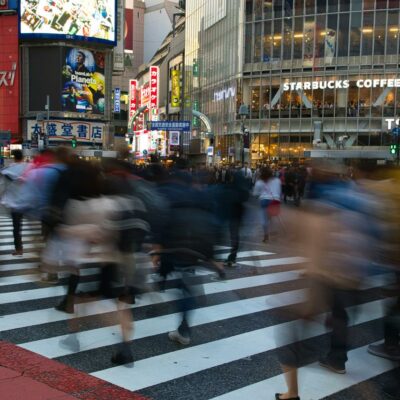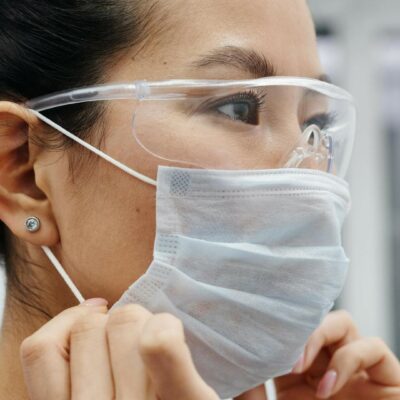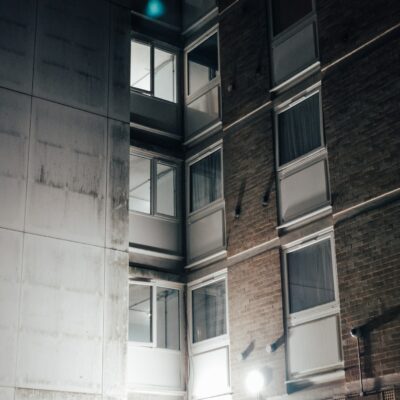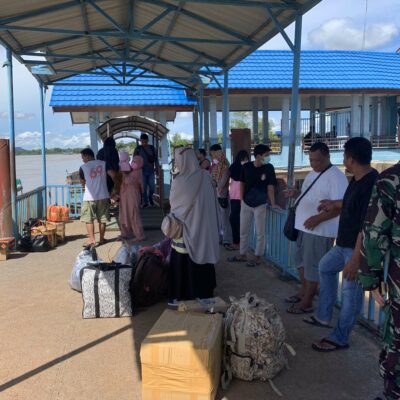Since the outbreak of COVID-19 in Australia, Australian governments have worked hard to mitigate the pandemic’s health and economic effects. While leaders around the world continue to struggle with managing the virus, Australia has so far recorded among the lowest number of cases per capita in the world and a relatively low death toll, despite a second wave in the state of Victoria in the second half of 2020. Australian governments imposed strict stay-at-home orders for the first wave of COVID-19 in late March 2020; and the State Government of Victoria subsequently imposed the most severe restrictions on citizens’ movements anywhere in Australia, particularly in Melbourne. Most recently, Victoria had undergone a snap five-day lockdown due to an outbreak from hotel quarantine.
While the majority of the population has adhered to the rules, there was a backlash from some who felt the restrictions infringed their individual rights. According to the most recent data from Fines Victoria, nearly 20,000 fines were issued in Victoria alone up until August 24, 2020 for breaches of COVID-19 rules. On a national level, more than $5.2 million has been raised from the fines. The Victorian lockdown breaches included a highly publicised incident at a well-known hardware chain in which a customer refused to wear a face mask, breaches of police roadblocks, an illegal house party in the outer suburb of Dandenong, an attack on a policewoman who was enforcing mask-wearing rules, and a group of teenagers who attended a party in a central Melbourne apartment. Furthermore, when authorities checked on 3,000 homes to monitor where the occupants were abiding by self-isolation rules, on more than 800 occasions (27 percent) were found to violate government measures. Protesters against the strict lockdown measures included those from certain ethnic groups.
It appears from our observations that Asian communities did not generally raise or act on concerns that COVID-19 rules breached their individual rights. This raises a number of questions: Do ethnic communities in Australia respond differently to the global pandemic and Australian governments’ emergency public health measures? Do people with Asian backgrounds present more tolerant and subservient attitudes towards authorities than other ethnic cohorts? If so, what would be the possible reasons for such differing behaviours and expectations?
While we don’t claim we represent all Asian Australians, we do have a few theories that may explain why certain groups are more compliant with strict government measures than others when they may clash with individual liberty.
An Asian Australian perspective on the pandemic
We focus on the groups that we’re most familiar with, namely Korean, Chinese, Japanese, and Vietnamese in Australia. There is no generalisable Asian perspective to the pandemic in such a culturally diverse country as Australia, but there may be an Asian perspective these communities share on democratic citizenship, civic responsibilities and the limitation of individual rights in case of a national emergency.
How individuals respond to and comply with public policy is influenced by a ‘social contract’ with the state and the nature of state-society relations. Classical theorists such as John Locke, Thomas Hobbes and Jean-Jacques Rousseau broadly argued that a legitimate government exists as a result of a ‘social contract’ where individuals conditionally transfer some of their rights to the government in order to ensure the enjoyment of their lives, liberty, and property.
Individuals and communities have different tolerance levels to limitations on their rights and freedoms. In extraordinary events like a global pandemic, Asian immigrants in Australia may respond differently to their host government’s public health crisis response than the Australian-born population. For example, Asian immigrants may be more tolerant of policies requiring mask-wearing and contact-tracing, all of which may limit individual freedoms, than the Australian-born population.
Mask wearing as care and respect for the community
Face masks are probably the most obvious symbol of a pandemic and one which, broadly speaking, is a distinctive ‘Asian’ behaviour. Wearing masks that cover the nose and mouth is proven to reduce the transmission of viruses, including COVID-19.
In many parts of Asia, mask-wearing is common because it is regarded as being safer and more considerate of others. Long before the COVID-19 pandemic emerged, such practice was considered normal in Hong Kong, Taiwan and Singapore. Donald Low, a behavioural economist at the Hong Kong University of Science and Technology describes mask-wearing in Hong Kong as being like a ritual, such as a uniform, which indicates hygienic behaviour. We have spoken to some of our fellow Asian Australians who described masks as being like a ‘second skin’. Vietnam implemented precautionary mask-wearing measures more than a month before COVID-19 was declared a global pandemic by the World Health Organization (WHO) in March 2020 and Vietnamese people quickly adapted to wearing them in public as early as February 2020. Similarly, many Asian Australians wore masks in public long before the state of Victoria first made mask-wearing mandatory in July 2020.
But mask-wearing is a new practice in Australia and is yet to be fully embraced as a public health measure; and is not necessarily understood as a considerate gesture to others. For example, a mask-wearing student from Hong Kong was physically attacked by a stranger who also accused him of being infected with COVID-19 ; and a ‘white woman’ was reported to have refused to wear a mask because she said she was ‘Australian’ and not ‘Asian’.
The experience of many East Asian nations with past epidemics has helped governments and the public accumulate expertise on virus control and develop useful social norms. The 2003 outbreak of Severe Acute Respiratory Syndrome (SARS) swept across the globe, significantly affecting mainland China, Hong Kong, Singapore and Taiwan. The 2009 outbreak of H1N1 also severely affected Hong Kong, Japan, Singapore and Taiwan. More recently, in 2015 the Middle East Respiratory Syndrome (MERS) in South Korea led to the largest MERS outbreak outside of the Middle East. Through such experience, the region has collective memory of losing daily normality. In contrast, the only time Australians wore masks in public pre-COVID-19 was during the Spanish influenza outbreak in 1919. In addition, Australians were given mixed messages from authorities in regard to the efficacy of mask-wearing: for example, Australia’s Chief Medical Officer Paul Kelly stated in early July when a second wave of COVID-19 began to take hold in Melbourne that ‘in general terms, masks are not needed in most circumstances, for most people, most of the time’.
Unfortunately, Asians in Australia and elsewhere—far from being acknowledged as early adopters of virus control measures for the social good—have experienced racist attacks as a result of their mask-wearing. Part of the problem has been the messaging of political leaders such as then US President Donald Trump who repeatedly referred to COVID-19 as the ‘Chinese virus’. This had the effect of being used against a specific nationality and ethnicity, or those who look like they are from that ethnic group. With direct and indirect negative experiences, confusing medical advice, and damning political messages, Asian Australians have experienced fragile state-society relations. In particular, Asian immigrants’ relations with the Australian state are undergoing changes in their behaviour and expectations about the role of the state when it comes to a global pandemic. It is important to pay attention to these changing relations and how they will shape the democratic multicultural society in the post-pandemic era.
Privacy versus contact-tracing
The prioritisation of collective safety over individual rights is often represented as a distinctive Asian characteristic. In what American political philosopher Michael Sandel would call communitarian democracy, citizens are willing to sacrifice their individual liberty and privacy for the common good of community safety and public health. In many Asian countries, we have witnessed individual citizens voluntarily participating in COVID-19 testing, actively seeking information about virus containment and avoiding contact with potential virus carriers. Even when credit card transaction details and mobile data were being used for contact-tracing, there has been relatively minimal resistance from the public.
South Korean citizens’ responses to the government contact-tracing system are a prime example. The country has been relatively successful in curtailing the epidemic without introducing any border closures, nationwide lockdowns or restrictive mass-quarantine strategies. Its success teaches us that proactive testing and contact-tracing, as well as mass use of face-masks are crucial. In the wake of the MERS, South Korea passed laws that allowed authorities to access personal data and enabled strong contact-tracing technologies to be used for future outbreaks by heavily investing in preparedness and testing capabilities. With this groundwork for strong test-trace-treat strategy and technology, South Korea has managed to stay open for businesses and movement. In return for giving up their privacy, South Koreans gained up-to-date information about COVID-19 cases in their neighbourhood, including minute-details of the routes of the confirmed cases without identification of individuals. The public receive location-based emergency alert messages that notify them where the confirmed cases are and when they are near them. This process has been facilitated by the country’s high adoption rates of digital devices—90 percent of South Koreans own a smartphone.
Similarly, Taiwan’s low infection rate has been made possible largely because of its swift action and the use of innovative information technology which works together with the National Health Insurance system and the National Central Epidemic Command Center. Like South Korea’s use of GPS data in their contact-tracing, Taiwan also used a GPS-based information system, called the Intelligent Electronic Fences System, which locates and monitors all quarantined individuals and anyone who may come into contact with them.
This contrasts with the debates in many Western countries where there are high cultural, legal and political barriers to the use of private data by the government. For example, when the former US President Donald Trump contracted COVID-19 in October 2020, the White House decided against tracing people who were at a White House event attended by the President while infectious. Many human rights groups in the UK warned against COVID-19 contact-tracing apps due to privacy concerns and claimed that the UK trial app was unlawful under the Data Protection Act. Furthermore, Norway’s contact-tracing app ‘Smittestopp’ which actively carried out live or near-live tracking of users’ locations was considered a ‘highly invasive surveillance tool which goes far beyond what is justified in efforts to tackle COVID-19’. Two months later, Norway’s health authorities suspended the use of the app in public.
In Australia, many Asian Australians had been watching the successful suppression of COVID-19 in some Asian nations and had high expectations of the Australian government’s COVIDSafe contact-tracing app. The Prime Minister Scott Morrison claimed in August 2020 that it had more than seven million downloads, since its launch on 26 April. But while Australia’s download rate of the COVIDSafe app was at 21.6 percent as of July 2020, the percentage of Singapore’s download rate was at 45 percent. Singapore was the first country to deploy a national COVID-19 tracing app called TraceTogether and with this strong contact-tracing technology, the city-state has successfully managed a sudden surge of infections which largely emerged from migrant workers. According to Statista’s data, the main reasons for not downloading the COVIDSafe app in Australia were: ‘I don’t trust the safety of the app on my smartphone’ (24.2 percent); ‘I don’t trust the government with my data’ (23.8 percent ); and ‘I don’t want the government tracking me’ (14.5 percent). Overall, these three reasons together indicate that 62.5 percent of Australians distrust government-run contact-tracing systems on ethical grounds.
Trust in the COVIDSafe app may have also been undermined by its efficacy. A Senate Estimates hearing was told by a federal Health Department representative in October 2020 that the app had only detected 17 contacts not found by other contact-tracing methods. One of the problems was that the original version of the app required users to have it open to detect their movements. Senior opposition leaders such as Shadow Health Minister Chris Bowen and Queensland Health Minister Steven Miles labelled the app as ‘a failure’ and ‘useless’.
Many excluded from emergency funds
To protect Australian businesses and workers from the COVID-19 economic downturn, the federal government launched a wage subsidy program called JobKeeper (initially budgeted in March at $130 billion but later revised down to $70 billion). A federal government financial assistance program called JobSeeker was also launched. While both payments were available to eligible Australian citizens and permanent residents, 1.1 million temporary skilled visa holders were excluded. This left many tax-paying migrants, who were in the Australian workforce before the COVID-19 pandemic, feeling abandoned. Other countries such as the United Kingdom, New Zealand, Canada and Ireland provided government subsidies to temporary visa holders.
In addition, Prime Minister Scott Morrison urged temporary visa holders, including many fee-paying international students, to return home if they could not support themselves during the pandemic. This was despite the fact many could not ‘go home’ due to border closures. The mixed messages confused young Asian immigrants, international students and their parents in relation to how Australian authorities view them during a crisis and whether Australia is a safe and welcoming place for Asian immigrants.
Towards a new state-society relation after the pandemic
Asian communities in Australia are continually shaping and re-shaping their ideas about state-society relations. In many respects, the pandemic has exposed the frailty of the social fabric as Australians, especially Victorians, experienced economic, mental and social distress under difficult and unusual conditions. COVID-19 in 2020 provided a window on how the Australian state and society can unfairly treat people of diverse backgrounds and legal status, despite them leading the way, in many respects, in relation to the adoption of public health measures such as mask-wearing and support for contact-tracing. We have also seen racially motivated verbal and physical attacks on Asian Australians during the pandemic.
In many respects, COVID-19 has taught us to reset the expectations of the federal and state governments; as well as the reaction of the media and general public to Asian Australians. With the politics and inequality of COVID-19 vaccine acquisition and distribution in 2021, we need to think about how we continue to maintain trust in governments and healthy relations across diverse ethnic communities. If we are to build a strong multicultural society, it is important to recognise that many of us in Australia are children of immigrants or immigrants ourselves, and diversity is our biggest strength, not a weakness. While we don’t claim our observations are representative of the entire cohort, some of the communitarian values and compromise on individuals rights for the sake of public health may have become common Australian values during the COVID-19 pandemic—strengthening our resilient multicultural society.
Authors: Haina Lee and Dr Jay Song.
Related webinar: Governance or social resilience: Learning from Southeast Asia’s experience with COVID-19.
Image: People wearing masks on a train in Melbourne, 2020. Credit: Alpha/Flickr.




